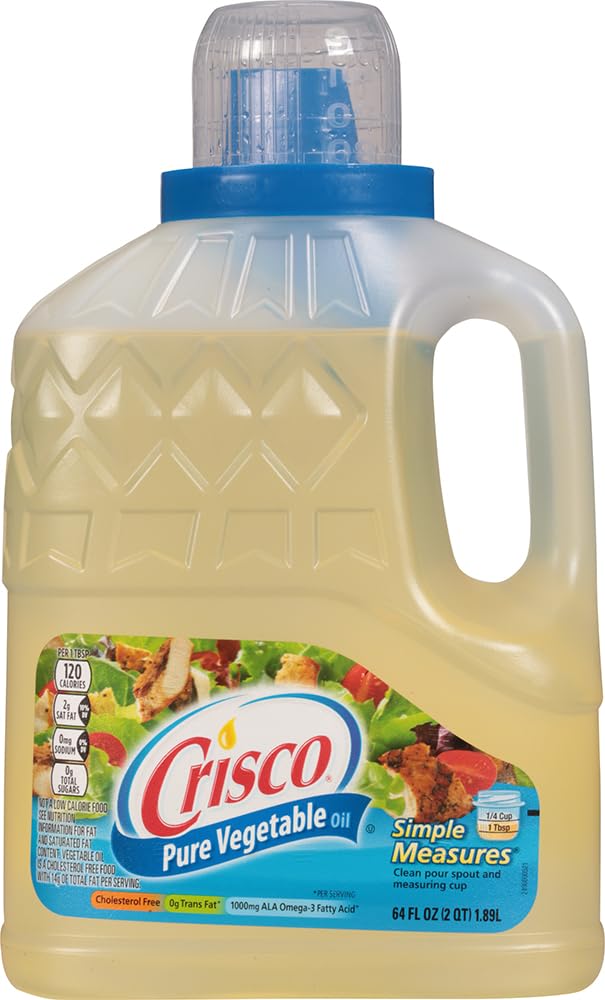


Price: $7.15
(as of Apr 10, 2025 16:50:43 UTC - Details)
What is the Best Oil to Cook With? A Comprehensive Guide
Introduction
Cooking oil is a staple in every kitchen, but with so many options available, how do you choose the best oil to cook with? Whether you're frying, sautéing, or baking, the type of oil you use can greatly impact the flavor and healthiness of your meals. In this article, we will explore the best oils for cooking, focusing on various long-tail keywords such as "best oil for frying," "healthiest cooking oil," and "best oil for baking." By the end of this guide, you'll have a solid understanding of which oil suits your cooking needs.
The Best Oil for Frying
When it comes to frying, you want an oil that can withstand high temperatures without breaking down. This is where oils with high smoke points come into play.
What is a Smoke Point?
The smoke point of an oil is the temperature at which it starts to smoke and break down, producing harmful compounds and off-flavors. Oils like canola, peanut, and avocado oil have high smoke points, making them ideal for frying.
Canola Oil: A Versatile Choice
Canola oil is a favorite among chefs and home cooks alike. With a smoke point of around 400°F, it's perfect for deep frying and stir-frying. Plus, it's relatively neutral in flavor, so it won’t overpower your dishes.
Peanut Oil: Perfect for Asian Cuisine
If you love Asian dishes, peanut oil might be your go-to. With a smoke point of about 450°F, it's fantastic for frying tempura or making crispy spring rolls. Its slightly nutty flavor adds a unique touch to your meals.
Avocado Oil: The Premium Option
For those looking for a healthier option, avocado oil is a great choice. With a smoke point of around 520°F, it's not only excellent for frying but also offers heart-healthy fats.
Healthiest Cooking Oil
Choosing the healthiest oil can be confusing, especially with all the options out there. Let's break down some of the healthiest oils for cooking.
Olive Oil: The Mediterranean Favorite
Olive oil is often touted as one of the healthiest cooking oils. Rich in monounsaturated fats and antioxidants, it’s great for salads and light cooking. However, its smoke point is around 375°F, so it’s best used for sautéing or drizzling over dishes rather than frying.
Coconut Oil: A Trendy Choice
Coconut oil has gained popularity for its unique flavor and health benefits. It contains medium-chain triglycerides (MCTs), which may boost metabolism. However, it has a lower smoke point of about 350°F, making it suitable for baking and light frying.
Flaxseed Oil: Best for Cold Dishes
While not ideal for cooking, flaxseed oil is loaded with omega-3 fatty acids. It’s best used in salad dressings or drizzled over cooked vegetables, as it has a low smoke point of about 225°F.
Best Oil for Baking
Baking often requires different oils than frying. Here are some excellent options for your baking needs.
Vegetable Oil: The All-Purpose Choice
Vegetable oil is a common ingredient in many baking recipes. Its neutral flavor and high smoke point make it versatile for cakes, muffins, and cookies.
Olive Oil: A Healthier Alternative
Using olive oil in baking can add depth to your recipes. It works beautifully in bread and brownies, providing a moist texture and subtle flavor. Just remember to use light olive oil for a less pronounced taste.
Coconut Oil: For a Unique Twist
Coconut oil can add a delightful flavor to baked goods. It’s solid at room temperature, so be sure to melt it before adding it to your batter. This oil is perfect for cookies and cakes, lending a tropical vibe to your desserts.
Best Oil for Salad Dressings
While we often think of oils for cooking, they play a significant role in dressings too. Here are some of the best oils for salads.
Extra Virgin Olive Oil: The Gold Standard
Extra virgin olive oil is not only healthy but also incredibly flavorful. It’s perfect for drizzling over salads, giving your greens a delicious kick. Plus, its high antioxidant content makes it a great choice for your health.
Avocado Oil: A Creamy Option
Avocado oil has a rich, buttery flavor that works wonders in dressings. Its high monounsaturated fat content makes it a heart-healthy choice. Mix it with vinegar for a simple yet tasty salad dressing.
Sesame Oil: A Flavor Booster
If you’re making an Asian-inspired salad, sesame oil can add a unique flavor profile. Just a few drops can elevate your dressing and add depth to your dish.
Conclusion
When it comes to cooking oils, there isn’t a one-size-fits-all answer. The best oil to cook with depends on what you’re preparing and your health preferences. For frying, consider oils with high smoke points like canola and peanut oil. For baking, vegetable and coconut oils can provide great results. And don’t forget about the importance of using quality oils for your dressings, like extra virgin olive oil and avocado oil. By understanding the different types of oils and their uses, you can make informed choices that enhance both the flavor and healthiness of your meals. So, the next time you're in the kitchen, remember this guide to find the best oil to cook with!
Made from soybeans, with a light taste that lets the flavor of your food shine through
A cholesterol-free food and has 0g trans fat per serving
1000mg of ALA per serving
Gluten Free
Kosher
